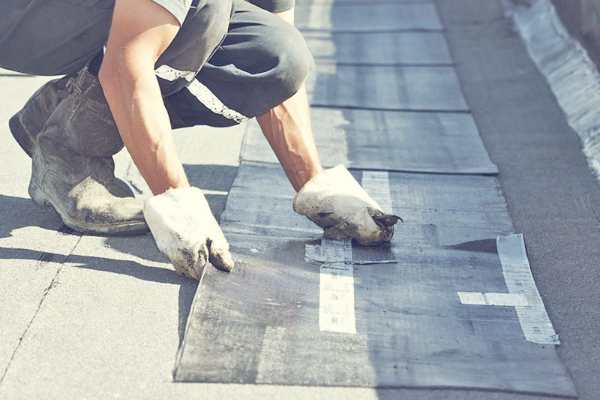Regarding maintaining a home, the roof often takes a backseat in the minds of householders. Yet, it plays a crucial role in protecting your living space from the elements. A well-functioning roof is essential for the overall health of your property, and with the growing emphasis on eco-friendliness, many are now exploring sustainable roofing options. These sustainable options not only help reduce environmental impact but also enhance energy efficiency and provide added aesthetic appeal to homes.
Choosing roofing solutions can be overwhelming. From knowing when it's time for a new roof to considering the pros and cons of multiple materials, there's a lot to consider. Whether you are dealing with typical roofing problems or thinking about a full roof replacement, being aware of your options is crucial. In this article, we will delve into the best eco-friendly roofing choices available today and equip you with the knowledge needed to make wise choices for your home.
Comprehending Roof Replacement
Replacing a roofing system is a major project that countless property owners will face at any time. Knowing when to replace your roofing system is important to avoid extensive harm to your property. Factors such as the age of your roofing, visible wear and tear, and unexpected leaks can signal the necessity for a new roof. Routine checks are vital to assess the condition and assist you make educated choices about the lifespan and maintenance of your roof.
There are numerous options to think about when it comes to replacing a roof, each with its pros and cons. Asphalt shingle roofs remain a favored option due to their affordability and simplicity of installation. However, Affordable roofing Kearney like steel, ceramic tile, and timber offer improved strength and aesthetic attractiveness. When choosing the best material for your home, take into account factors such as weather conditions, financial plan, and sustainability to make sure you make a decision that matches with your requirements and values.
The process of replacing a roof involves multiple phases, from first evaluation to setup. Homeowners should be prepared for potential disruptions during this time. It's crucial to communicate with your roofing contractor about timelines, expectations, and any issues you may have. Knowing what to anticipate during a roof installation can assist ease the process and ensure that the job proceeds smoothly, thereby protecting your home for years to come.
Typical Roofs Issues and Solutions

Property owners often encounter various roof problems that can jeopardize the stability of their ceilings. One of the most common issues is leaks, which can arise from worn shingles, incorrectly sealed flashing, or age over time. Regular inspections are crucial to detect possible leakages early. Resolutions include replacing damaged or damaged shingles and making sure that flashing is adequately sealed. If a leak is found, fixing it promptly can prevent more extensive harm to the home’s inside.
Also prevalent issue is the growth of moss, algae, or debris, which can lead to premature roof failure. These growths can retain moisture and cause shingles to break or rot, reducing the duration of the roof. To address this, homeowners should plan for routine cleaning and maintenance. Installing zinc or copper strips near the roof ridge can also help prevent the growth of moss and algae, providing a permanent fix to this issue.
Moreover, roof breathing is an often-overlooked aspect that can lead to serious concerns. Inadequate ventilation can cause heat and moisture to build up in the attic, leading to a host of issues, including ice dams in winter and structural problems over time. To resolve this, it is essential to ensure proper attic ventilation by installing vents or ridge vents to allow adequate air circulation. This proactive measure not only extends the life of the roof but also enhances energy efficiency within the house.
Eco-Friendly Rooftop Options
Choosing sustainable rooftop solutions may greatly minimize your environmental impact while boosting the green aspect of your home. Eco-friendly rooftop options consist of resources that are renewable, recyclable, and energy saving. Such as, metal rooftops are extremely durable and can be fabricated from repurposed content. They bounce back solar heat, reducing energy consumption for cooling. In addition, materials like bamboo and reclaimed wood offer visual charm and eco-friendliness for homeowners seeking to combine functionality with environmental considerations.
An additional favored selection is vegetative roofs, which include planting plants on top of traditional roofing materials. These green roofs deliver insulation, reduce stormwater runoff, and improve air quality. look what i found create habitats for wildlife and can boost the aesthetic of a space. Nonetheless, it's important to ensure sufficient structural support and maintenance for these systems to flourish, highlighting the need for expert installation and care.
Incorporating eco-friendly roofing materials made from recycled materials is another way to improve your house's eco-friendliness. These roofing tiles not only minimize waste but also provide equivalent performance to traditional rooftop materials. Additionally, solar rooftop solutions present an innovative approach, enabling homeowners to create renewable energy while protecting their home. Comprehending the benefits and factors of each sustainable option can assist you arrive at an informed decision that matches your eco-friendly goals.
